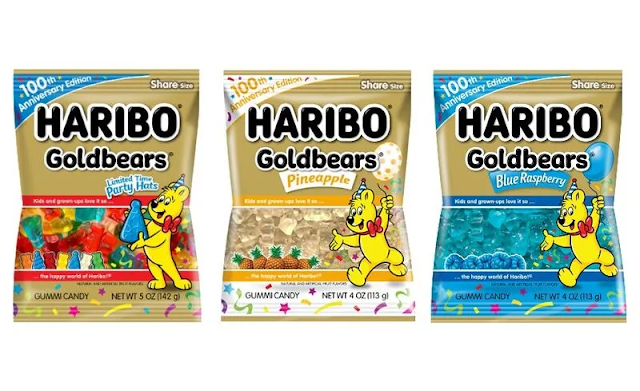Gummy Worms Are Not as Old as You Think. The traditional sweet has just recently arrived in America
Snack Stack, a Substack weekly by food writer Doug Mack highlighting the fascinating history of supermarket aisle staples and culinary detritus alike, is the place to go if you're searching for a multitude of amusing tidbits about your favorite foods (and don't enjoy checking onto Twitter for that information). Mack's storytelling approach is captivating, and the confectionery and treats he examines have unexpectedly interesting backstories. For example, I'd never given any consideration to the origins of gummy worms, and I was surprised to learn how young they are.
Indeed, all "gummies" as we currently know them are a relatively new phenomena, having arrived in the United States just in the last 40 years. While chewy and fruity sweets like jelly beans and Swedish Fish were available before the 1980s, Mack says that they "are not the same as gummies, which have a somewhat different, less sticky, more biteable feel."
Only in 1981 did Haribo Goldbears, a product that had garnered popularity in Germany for most of the twentieth century, make its American premiere. Their arrival increased the national appetite for springy, gummy candy, which had already been growing as the product trickled into the country in previous years via members of the military and, according to Bon Appetit, "German-language teachers in U.S. high schools dispensing gummy bears in classrooms so their students could sample foreign cuisines."
Trolli imported its goods to North America from Germany the same year, according to Snack Stack, and Gummi Squiggles—the squiggles being, effectively, worms—heightened our burgeoning relationship with the candy. More animal forms quickly appeared. But there's something about worms that has us hooked.
"What gummi worms delivered to American customers in the 1980s was joy through low-risk revulsion," Mack says. "While gummi worms rapidly became a boring mainstay of candy aisles across the United States... They started off as a real novelty, with a transgressive appeal that was unquestionably a crucial marketing element."
It stands to reason that the same generation that gave us Garbage Pail Kids would like chewing the heads off slimy, slithery candy bugs. The only mystery is why Trolli would have strayed so far from the traditional bear form and gone straight to something that lives in the muck. Snack Stack offers a few ideas:
While I'm still not sure, here's my best guess: Trolli just wanted to provide something distinct from bears, and they saw American customers as particularly open to items that felt 'strange,' but weren't genuinely aberrant in terms of tastes or ingredients. Few things are more appealing to Americans than the appearance of adventure and daring (see also pre-dirtied jeans and fake log cabins and covered-wagon trips for tourists).
And that's why I enjoy reading Snack Stack so much: if we want to learn about our favorite foods, we have no choice but to reveal the unvarnished truth about ourselves. As children, we craved both novelty and comfort, and as adults, nothing has changed. I enjoy gummy candy in all of its varieties—peach rings, Sour Patch Kids, even the occasional Trolli Octopus—but nothing beats a worm.
How fortunate I am to have lived during the decades when gummy candy was plentiful in the United States. It's incredible to believe that my parents, who were fully grown adults by 1981, had never ever tried one.
#GummyCandy #GummyWorms #GummyCandies #GummyBear #GummyBears #History
SOURCE: thetakeout
What do you think of this blog? Write down at the COMMENT section below.






No comments:
Post a Comment